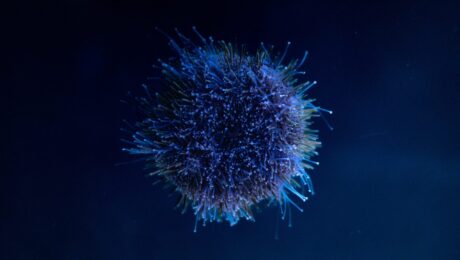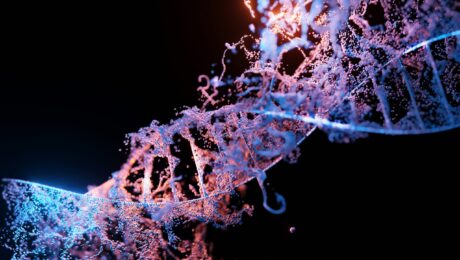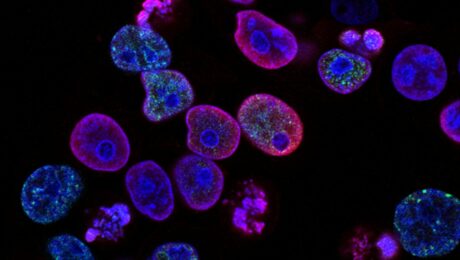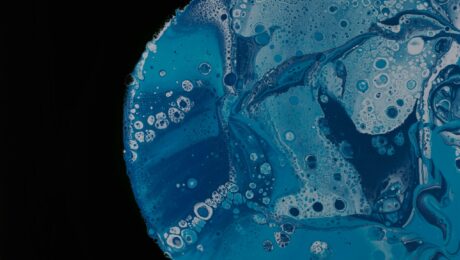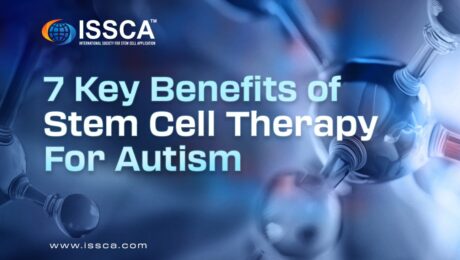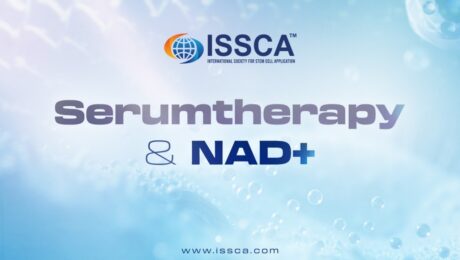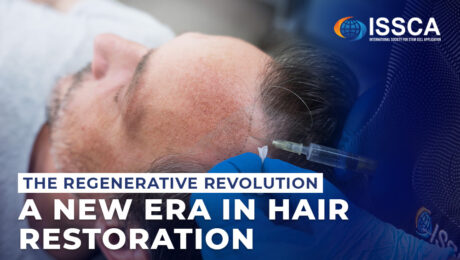NK Cells: The Next Frontier in Onco-Immunotherapy
Harnessing the Body’s Natural Defenses in Regenerative Oncology
In the evolving field of regenerative medicine, few innovations hold as much promise as the use of Natural Killer (NK) cells in cancer therapy. Often described as the “elite commandos” of the immune system, NK cells possess the innate ability to recognize and eliminate malignant cells without prior sensitization. Today, with advances in cellular therapies and immune modulation, NK cells are emerging as a cornerstone of onco-immunotherapy, reshaping how physicians approach cancer treatment and immune rejuvenation.
Understanding NK Cells: The Immune System’s First Responders
Unlike T cells, which require antigen-specific activation, NK cells act on instinct. They patrol the body, scanning for signs of abnormality—such as missing “self” markers or viral proteins—and execute a swift, targeted response. Their dual mission includes:
- Eliminating infected or malignant cells through cytotoxic granules (perforin and granzymes).
- Producing cytokines like interferon-gamma (IFN-γ) to activate broader immune responses.
However, with aging and chronic disease, NK cells lose efficiency—a phenomenon known as immunosenescence. This decline contributes to increased cancer risk, infections, and reduced regenerative potential.
NK Cell Therapy: Rejuvenating Immune Function
Recent clinical studies have demonstrated the potential of ex vivo expanded NK cells to restore immune vitality. By harvesting a patient’s own NK cells, expanding and activating them in a controlled environment, and re-infusing them intravenously, physicians can recalibrate immune surveillance and improve systemic health.
Key Benefits of NK Cell Therapy:
- Enhanced tumor cytotoxicity – reactivated NK cells can destroy cancer cells with greater precision.
- Senescent cell clearance – reducing “zombie cells” that drive inflammation and tissue degeneration.
- Lower systemic inflammation – suppression of pro-inflammatory markers like IL-6 and TNF-α.
- Improved immune profile – restoration of a younger, more cytotoxic NK cell phenotype.
These findings underscore the growing recognition that immune rejuvenation is central to the future of regenerative medicine.
NK Cells in Onco-Immunotherapy
For oncology, NK therapy represents a precision medicine approach capable of complementing existing treatments:
- Adjunct to surgery or chemotherapy: expanded NK cells can act as a “clean-up force,” eliminating residual malignant cells.
- Potential role in minimal residual disease (MRD): maintaining remission by sustaining immune vigilance.
- Synergy with MSC and exosome therapies: NK expansion can enhance graft integration and improve the regenerative microenvironment.
The ability to directly target malignant cells while reshaping the inflammatory landscape positions NK therapy as both a therapeutic and preventive tool in oncology.
Clinical Outcomes and Safety
In pilot trials, older adults receiving autologous NK infusions exhibited:
- A 2-fold increase in circulating NK cells within one month.
- Reduced systemic inflammation and improved biomarker profiles.
- Telomere length stabilization, suggesting a measurable anti-aging effect.
Importantly, safety data show no severe adverse events, with only mild, transient symptoms reported. These results highlight the feasibility of integrating NK expansion protocols into clinical regenerative medicine.
Why This Matters for Regenerative Medicine Physicians
The shift toward immune-centric therapies signals a new paradigm: regenerative medicine is no longer limited to stem cell transplantation or tissue engineering. Instead, immune recalibration therapies, like NK cell rejuvenation, are poised to become essential tools for physicians aiming to extend both lifespan and healthspan.
For clinics, adopting NK cell therapy offers:
- Differentiation in the marketplace as leaders in immune rejuvenation.
- Expanded treatment portfolios that integrate oncology, longevity, and regenerative protocols.
- A competitive edge in the rapidly growing market for advanced cell-based interventions.
Conclusion: The Future of NK-Based Therapies
As science advances, NK cells are moving from experimental curiosity to clinical reality. By leveraging the body’s innate cytotoxic arsenal, physicians can now offer patients innovative treatments that not only fight cancer but also restore immune youth.At ISSCA, we believe that NK cell therapy represents the next frontier in regenerative oncology and cellular medicine. As research expands and protocols become standardized, NK-based interventions will likely stand alongside mesenchymal stem cells, exosomes, and peptide therapies as pillars of advanced regenerative care.
- Published in Blog
3 Breakthrough Innovations You’ll Discover at the ISSCA Global Summit
Regenerative medicine is no longer a promise of the future—it is a present-day reality transforming the way physicians treat chronic disease, manage aging, and accelerate recovery. The ISSCA Global Summit 2025, taking place in Cancún on September 12–13, is set to be one of the most influential gatherings in the field, bringing together pioneers in cellular therapies, applied biotechnology, and personalized medicine.
For physicians, researchers, and healthcare innovators eager to lead this transformation, the Summit is more than an event—it’s an advanced training ground where science meets clinical application. Among the many opportunities for professional growth, three breakthrough innovations will stand out as defining milestones in the evolution of modern medicine.
1. MUSE™ Cell Therapies: Targeted and Intelligent Regeneration
The discovery of Dezawa Muse Cells™ (Multilineage-differentiating Stress-Enduring cells) marks one of the most remarkable advances in stem cell research over the past decade. Unlike traditional stem cells, Muse cells are pluripotent and naturally home to sites of injury without the need for external guidance. Once there, they differentiate into the exact cell type required—whether neuronal, cardiac, pulmonary, or musculoskeletal—making them a precise and highly adaptive therapeutic tool.
At the Summit, a select group of physicians will participate in an exclusive certification led by Professor Mari Dezawa, the Japanese scientist who first identified Muse cells. This rare training will provide hands-on protocols and safety guidelines for applying Muse cell therapy to complex cases such as:
- Cardiovascular damage (including post-infarction recovery)
- Neurodegenerative disorders (Parkinson’s, Alzheimer’s, spinal cord injury)
- Pulmonary injury and fibrosis
- Severe musculoskeletal trauma
With direct instruction from the field’s leading expert, attendees will gain a competitive edge in offering treatments that go beyond symptom management—delivering true tissue regeneration.
👤 Speaker: Prof. Mari Dezawa
2. High-Precision Biomodulatory Peptides
Once considered an emerging niche, peptide therapy is now a foundational tool for longevity medicine, hormonal balance, injury recovery, and performance optimization. Peptides act as signaling molecules, instructing cells to repair, regenerate, and optimize their function.
During the Summit, the “Advanced Peptides: Precision Protocols for Personalized Medicine” certification will provide an in-depth exploration of clinically relevant compounds such as BPC-157, TB-500, Thymosin Alpha-1, Epitalon, and more.
Participants will learn how to:
- Develop individualized peptide protocols for patient-specific goals
- Integrate pen delivery systems and microdosing strategies
- Combine peptides with cellular therapies for synergistic effects
- Apply protocols for age management, neuroregeneration, fertility, and metabolic optimization
By mastering these advanced applications, physicians will be able to craft highly targeted, evidence-based interventions that enhance both preventive and restorative care.
👤 Speakers: Dr. Greg Jones & Dr. Jason Pencek
3. Advanced Cellular Therapies: Redefining Personalized Medicine
The frontier of regenerative medicine now extends far beyond stem cells. Physicians attending the Global Summit will gain direct access to the latest cell-based and immune-modulatory therapies transforming patient care:
- High-purity exosomes for cell-to-cell communication and tissue repair
- Natural Killer (NK) cells for precision immunotherapy in oncology and viral infections
- Dendritic cell vaccines for targeted cancer treatment
- Expanded stem cell cultures produced under GMP (Good Manufacturing Practice) standards for maximum safety and efficacy
Led by global authorities such as Dr. Rafael González and Dr. Matthew Halpert, these sessions will merge peer-reviewed science, clinical case studies, and ready-to-implement protocols. The result is a practical toolkit physicians can integrate into their practice immediately—delivering treatments tailored to the genetic, immunological, and regenerative profile of each patient.
👤 Speakers: Dr. Rafael González, Dr. Matthew Halpert & Dr. Alan Gaveck
🎓 Certification: “Mastering Next-Generation Cellular Therapies and Regenerative Medicine”
Why the ISSCA Global Summit 2025 is a Must-Attend Event
Beyond the certifications and scientific lectures, the ISSCA Global Summit fosters a global community of innovators in regenerative medicine. Attendees will not only expand their technical expertise but also form strategic partnerships with thought leaders, researchers, and biotech companies driving the next wave of medical breakthroughs.
In an era where personalized, regenerative approaches are reshaping the standard of care, this is where the future of medicine takes shape—today.
Ready to Elevate Your Medical Practice?
The ISSCA Global Summit 2025 is more than an event—it’s a gateway to clinical transformation, where education becomes real-world application.
🧬 Learn from global leaders.
🧪 Train with proven clinical protocols.
🌎 Join an international medical network.
📅 Date: September 12–13, 2025
📍 Location: Cancún, Mexico
🎓 Optional Clinical Certifications: Limited spots.
👉 Reserve your seat now
- Published in Blog
Natural Killer (NK) Cells: Functional Biology and Clinical Applications in Immunotherapy and Regenerative Medicine
Natural Killer (NK) cells are essential components of the innate immune system, emerging as key players in immune surveillance, antiviral defense, tissue modulation, and advanced therapeutic applications. In regenerative medicine, their role transcends cytotoxicity, offering promising therapeutic potential for inflammatory, oncologic, autoimmune, and degenerative conditions. This article provides a detailed overview of NK cell ontogeny, activation mechanisms, functional regulation, clinical strategies, and translational challenges associated with their use in advanced cellular immunotherapy.
1. Introduction and Ontogeny
NK cells are large granular lymphocytes derived from CD34+ hematopoietic progenitors in the bone marrow. They are classified within the innate immune system due to their ability to recognize infected or malignant cells without prior antigen sensitization.
Differentiation and Subtypes
Two main NK subpopulations exist in peripheral blood:
- CD56^bright CD16⁻ NK cells: ~10% of circulating NKs. Potent cytokine producers (IFN-γ, TNF-α) with immunomodulatory functions.
- CD56^dim CD16⁺ NK cells: ~90% of circulating NKs. Highly cytotoxic via perforin- and granzyme-mediated apoptosis.
NK cells develop mainly in the bone marrow but also in secondary lymphoid organs (fetal liver, lymph nodes, tonsils, uterus). Their differentiation is driven by key cytokines such as IL-15, IL-2, IL-21, and the transcription factor Eomes.
2. Activation, Inhibition, and Cytotoxic Mechanisms
NK cell function is tightly regulated by a balance between activating and inhibitory receptors:
Inhibitory Receptors
- KIRs (Killer Immunoglobulin-like Receptors): recognize HLA-C and HLA-B.
- NKG2A/CD94: binds HLA-E.
- These receptors prevent NK cell activation against healthy, MHC-I expressing cells.
Activating Receptors
- NKG2D: detects stress ligands (e.g., MIC-A/B, ULBPs) on transformed or infected cells.
- Natural Cytotoxicity Receptors (NCRs): NKp30, NKp44, NKp46.
- CD16 (FcγRIII): mediates Antibody-Dependent Cellular Cytotoxicity (ADCC), essential for synergy with monoclonal antibody therapies.
Effector Mechanisms
- Direct cytotoxicity: release of perforins and granzymes inducing apoptosis.
- ADCC: lysis of antibody-coated target cells.
- Cytokine production: IFN-γ, TNF-α, GM-CSF to enhance innate and adaptive responses.
3. Clinical Applications in Oncologic Immunotherapy
3.1 Autologous vs Allogeneic NK Cells
- Autologous NK cells: isolated, expanded, and reinfused into the same patient. Safe but may be suppressed by the patient’s tumor microenvironment.
Allogeneic NK cells (haploidentical or off-the-shelf): bypass self-tolerance mechanisms, enhancing cytotoxicity in a controlled manner. More effective in eliminating tumor cells lacking self-MHC expression.
3.2 CAR-NK Cells
Chimeric Antigen Receptor (CAR)-NK cells combine NK cell innate properties with antigen-specific targeting:
- Lower risk of cytokine release syndrome (CRS) than CAR-T.
- Minimal risk of graft-versus-host disease (GvHD).
- Universal application via NK-92 cell lines or umbilical cord blood.
Early-phase trials have shown over 70% response rates in hematological malignancies and some solid tumors, with favorable safety profiles.
4. Role in Regenerative Medicine and Immune Modulation
4.1 Control of Inflammatory Microenvironments
NK cells modulate sterile or pathological inflammation by interacting with macrophages (M1/M2), dendritic cells, and regulatory T cells, promoting:
- Resolution of chronic inflammation.
- Tissue regeneration via immune modulation.
- A conducive environment for stem cells and tissue engineering therapies.
4.2 Anti-Aging Applications
Restoring NK cell function in aging individuals or using young donor NKs may:
- Enhance immune surveillance.
- Promote clearance of senescent cells (senolytic effect).
- Improve tissue repair in liver, muscle, skin, and vasculature.
4.3 Combination with Other Cell Therapies
Co-culturing or co-infusing NK cells with MSCs, MUSE cells, or exosomes can:
- Reduce tumorigenic risks in iPSC-based therapies.
- Protect allogeneic grafts via immune buffering.
- Accelerate neovascularization and neurorepair.
5. GMP Production, Expansion, and Clinical Validation
Sources and Expansion Methods
- Peripheral blood: requires leukapheresis and IL-2/IL-15-driven expansion.
- Umbilical cord blood: source of naïve, immunologically “clean” NK cells.
- NK-92 cell line: immortalized, modifiable, and suitable for large-scale therapy.
GMP Processing
- Magnetic isolation (CD56+/CD3-), expansion, activation.
- Cryopreservation, lot tracking, quality documentation.
- Rigorous testing for endotoxins, sterility, viability (>85%), and function.
Quality Control and Potency Assays
- In vitro cytotoxicity assays: against K562, Jurkat, or Daudi cells.
- Phenotyping: CD16, NKG2D, CD69, NKp46, perforin, granzyme B via flow cytometry.
- Secretome analysis: cytokine profiling (IFN-γ, TNF-α).
6. Challenges and Future Perspectives
| Challenge | Ongoing Strategies |
| Short in vivo persistence | IL-15 superagonists, nanoparticle delivery, CAR |
| Tumor immunosuppression | TGF-β blockade, PD-1/PD-L1 inhibition |
| Industrial scalability | Bioreactors, NK-92 lines, off-the-shelf models |
| Personalized application | KIR/HLA genotyping for tailored therapies |
Natural Killer cells represent a paradigm shift in modern immunotherapy. Their innate cytotoxicity, immune modulatory capabilities, and favorable safety profile make them ideal candidates for advanced clinical applications, especially in oncology, regenerative medicine, and aging-related conditions.
ISSCA supports ongoing clinical research, medical training, and translational implementation of NK cell-based therapies as part of a comprehensive approach to next-generation regenerative medicine.
- Published in Blog
IV Stem Cell Treatment: Clinical Principles, Mechanisms, and Applications
Intravenous (IV) stem cell therapy has emerged as a promising modality in regenerative medicine, offering a systemic approach to deliver cellular products with immunomodulatory and regenerative potential. This treatment modality is gaining attention for its potential in addressing inflammatory, autoimmune, and degenerative conditions through paracrine signaling, homing capabilities, and immune system regulation.
In this article, we will examine the key clinical principles behind IV stem cell administration, the types of stem cells used, mechanisms of action, therapeutic applications, and considerations for safety and efficacy.
1. Rationale Behind IV Stem Cell Delivery
Intravenous administration is a minimally invasive route that allows the systemic distribution of stem cells throughout the body. This delivery method is particularly advantageous when the therapeutic target is widespread, not easily localized, or involves multiple organ systems — such as in autoimmune disorders or systemic inflammation.
The rationale is not based on direct tissue engraftment, as was once believed, but rather on paracrine signaling. Stem cells, particularly mesenchymal stromal cells (MSCs), exert their therapeutic effects through the secretion of bioactive molecules — such as cytokines, growth factors, and extracellular vesicles (including exosomes) — which modulate the immune system and promote tissue repair.
2. Types of Stem Cells Used in IV Therapy
The most commonly used cell types for IV administration are:
- Mesenchymal Stromal Cells (MSCs)
- Sources: Umbilical cord, adipose tissue, bone marrow, Wharton’s jelly.
- Advantages: Immunoprivileged profile, anti-inflammatory effects, and trophic factor secretion.
- Clinical-grade MSCs must meet strict viability, sterility, and potency criteria under GMP standards.
- Hematopoietic Stem Cells (HSCs)
- Less frequently used in IV regenerative applications due to their hematologic specificity.
- Primarily used in bone marrow transplantation rather than systemic regeneration.
- Induced Pluripotent Stem Cells (iPSCs)
- High potential but limited by safety concerns regarding teratogenicity and tumorigenesis in systemic delivery.
3. Mechanisms of Action
The therapeutic effects of IV stem cell therapy are largely attributed to indirect mechanisms, including:
- Immunomodulation
- MSCs interact with immune cells (T cells, B cells, NK cells, dendritic cells) to downregulate pro-inflammatory cytokines (e.g., IL-1β, TNF-α) and upregulate anti-inflammatory mediators (e.g., IL-10, TGF-β).
- This is particularly beneficial in autoimmune and inflammatory diseases.
- Paracrine Signaling and Tissue Regeneration
- MSCs secrete growth factors (e.g., VEGF, HGF, IGF-1) that support angiogenesis, neurogenesis, and wound healing.
- Exosomes and extracellular vesicles act as carriers of mRNA, microRNA, and proteins that influence gene expression in recipient cells.
- Homing and Migration
- MSCs possess homing capabilities to sites of injury or inflammation, guided by chemokine gradients (e.g., SDF-1/CXCR4 axis).
- Despite pulmonary trapping being a common post-IV infusion, secretome-mediated effects continue to act systemically.
4. Clinical Applications
IV stem cell therapy is being explored in a wide range of conditions, including:
- Autoimmune Disorders
- Multiple sclerosis, rheumatoid arthritis, lupus: MSCs help restore immune tolerance and reduce autoreactive immune activity.
- Cardiovascular Diseases
- Post-infarction heart failure: IV MSCs have shown reduction in systemic inflammation and promotion of angiogenesis in ischemic myocardium.
- Neurological Disorders
- Parkinson’s, Alzheimer’s, stroke recovery: Paracrine signaling promotes neurogenesis, reduces neuroinflammation, and protects neural circuits.
- Chronic Inflammation and Aging
- IV MSCs are part of anti-aging protocols due to their systemic anti-inflammatory and regenerative effects.
- Used in biohacking and longevity strategies.
- Metabolic Syndromes
- Research is ongoing for conditions like Type 2 diabetes, where MSCs may improve insulin sensitivity and reduce systemic inflammation.
5. Clinical Considerations and Safety
While IV administration is generally well-tolerated, several considerations must be addressed:
- Dosing and Frequency
- Clinical studies have used doses ranging from 1 to 2 million cells per kg body weight, but protocols vary by indication.
- Repeat infusions may be required for chronic conditions.
- Pulmonary First-Pass Effect
- MSCs tend to localize in the lungs after IV infusion. While not harmful, this limits engraftment elsewhere but still allows for systemic paracrine action.
- Adverse Events
- Mild reactions such as fever, chills, or headache may occur.
- Severe complications are rare but may include thromboembolism if cells are improperly processed.
- Regulatory Compliance
- All cellular products must be manufactured under GMP standards and comply with local regulations (e.g., FDA, EMA, COFEPRIS).
- The use of allogeneic cells must be carefully justified with informed consent and risk management.
6. Future Perspectives
Ongoing advancements include:
- Exosome-enriched IV formulations as a cell-free alternative with fewer safety concerns.
- Personalized cell therapy protocols based on biomarkers and patient phenotypes.
- Combination therapies integrating stem cells with peptides, ozone therapy, or nutritional protocols to enhance efficacy.
Conclusion
IV stem cell treatment represents a powerful tool in the regenerative medicine arsenal, especially for systemic and multifactorial diseases. Its safety, accessibility, and non-invasive nature make it attractive both for patients and clinicians. However, to ensure optimal outcomes, the therapy must be grounded in scientific rigor, standardized protocols, and ethical clinical practice.
As research progresses and clinical experience expands, IV stem cell therapy is poised to redefine the landscape of modern medicine.
- Published in Blog
Mesenchymal Stem Cells: An Advanced Discussion on Their Biology, Mechanisms, and Clinical Translation
The relevance of mesenchymal stem cells (MSCs) in regenerative medicine and immunomodulation is undeniable. Their study has evolved from merely characterizing their in vitro multipotentiality to a more granular understanding of their complex mechanisms of action and intricate interaction with the tissue microenvironment.
Molecular and Cellular Mechanisms of Action
The therapeutic action of MSCs is not limited to their differentiation capacity, which, while important for structural defect repair, is often overshadowed by their paracrine and immunomodulatory effects.
Direct Paracrine Immunomodulation: MSCs secrete an arsenal of bioactive molecules that directly modulate immune responses. These include:
Cytokines and Chemokines: They produce anti-inflammatory cytokines such as Interleukin-10 (IL-10) and Transforming Growth Factor beta (TGF-β), which suppress T and B lymphocyte proliferation, inhibit dendritic cell maturation, and promote macrophage differentiation towards an anti-inflammatory M2 phenotype. Simultaneously, they can secrete factors like Indoleamine 2,3-dioxygenase (IDO), which catabolizes tryptophan, suppressing T cell proliferation. Prostaglandin E2 (PGE2) is another crucial mediator, inhibiting T and NK cell proliferation and modulating macrophage function.
Surface Molecules: They express PD-1 ligand (PD-L1) and Fas ligand (FasL), which can induce apoptosis in activated T cells and promote tolerance.
Adhesion Molecules: They interact with immune cells through cell-to-cell contact, influencing their activation and migration.
Mitochondrial Transfer and Extracellular Vesicles (EVs): Emerging mechanisms revealing sophisticated intercellular communication:
Mitochondrial Transfer: MSCs can transfer functional mitochondria to damaged cells (e.g., pulmonary epithelial cells or ischemic cardiomyocytes), improving their energy metabolism, survival, and mitigating oxidative stress damage.
Extracellular Vesicles (Exosomes and Microvesicles): MSCs release EVs loaded with proteins, lipids, mRNA, and microRNAs. These bioactive packages can be internalized by recipient cells, transferring their content and modulating gene expression and intracellular signaling pathways, exerting anti-inflammatory, immunomodulatory, and regenerative effects. This has paved the way for the development of cell-free therapies based on MSC exosomes.
Homing and Sensing of the Inflammatory Microenvironment: MSCs exhibit a “homing” capacity (selective migration) towards sites of injury or chronic inflammation. This process is guided by chemokine gradients (e.g., CXCL12, MCP-1) and the expression of adhesion molecules on inflamed endothelium. Once at the site, MSCs are “primed” by the inflammatory microenvironment (e.g., by IFN-γ, TNF-α, IL-1$\beta$), which enhances their immunomodulatory capacity.
Challenges in Clinical Translation
Despite their enormous potential, the translation of MSCs from basic research to routine clinical practice faces several significant challenges:
Heterogeneity and Standardization: MSCs from different sources (bone marrow vs. adipose tissue vs. umbilical cord) and different donors show variability in their phenotype, proliferative capacity, differentiation potential, and secretome profile. The lack of standardized protocols for their isolation, expansion, and quality control hinders reproducibility and comparability between studies.
Potency and Viability: The viability and functionality of MSCs can be compromised by the cryopreservation process, transport, and administration method, affecting the effective dose in vivo. The “potency” of an MSC product (its ability to induce a desired biological effect) is difficult to quantify and standardize.
Long-Term Safety: Although generally considered safe, long-term studies on the risk of tumorigenesis or undesirable immunosuppressive effects are crucial, especially in immunocompromised patients.
Biodistribution and Persistence: The biodistribution of MSCs after systemic administration and their persistence at the injury site are limited, often requiring high doses or repeated administrations. Cell engineering strategies to improve their homing and survival are an active area of research.
Regulation: The regulatory classification of MSC products varies between countries, creating barriers to development and commercialization. Harmonization of guidelines and clarity in the definition of these biological products are essential.
Future Perspectives and Improvement Strategies
The future of MSC-based therapies is moving in several promising directions:
Cell-Free Therapies: The use of MSC-derived extracellular vesicles (exosomes) as a therapeutic agent. This offers advantages such as lower immunogenicity, greater stability and ease of storage, and the ability to cross biological barriers (e.g., blood-brain barrier).
MSC Engineering: Genetic modification or priming of MSCs to enhance their therapeutic properties (e.g., overexpression of anti-inflammatory or homing factors) before administration.
Combination Therapies: Use of MSCs in combination with biomaterials or scaffolds to improve cell retention at the injury site and promote more structured tissue regeneration.
Precision Medicine: Identification of biomarkers to select MSC subpopulations with higher potency for specific indications, and stratification of patients who will respond best to MSC therapy.
Understanding the “Secretome”: Comprehensive investigation of the MSC secretome to identify the key molecules responsible for their therapeutic effects, which could lead to the development of bioactive drugs without the need for cell administration.
In conclusion, MSCs represent a vibrant and dynamic field in regenerative medicine. Overcoming current challenges through rigorous translational research will be fundamental to fully capitalize on their immense potential and bring these innovative therapies to a broader scale to benefit patients with various diseases.
Cell Therapy: Autologous vs. Allogeneic
Autologous therapy uses cells derived directly from the patient. This approach involves harvesting, processing, and reinfusing the individual’s own cells, which eliminates the risk of rejection by the host immune system.
Allogeneic therapy, on the other hand, utilizes cells from a genetically distinct donor. In this context, compatibility is a critical factor, as a disparity can precipitate an adverse immune response.
The selection between an autologous and allogeneic approach is based on the underlying pathology, cell availability and viability, and the individualized risk/benefit profile for the patient.
What is Stromal Vascular Fraction (SVF)?
Stromal Vascular Fraction (SVF) is a heterogeneous solution of cells obtained from adipose tissue, commonly known as fat. This component is a rich and complex source of diverse cell populations.
The extraction process involves collecting fatty tissue, usually via liposuction, followed by enzymatic processing to release and concentrate these cells. Due to its rich cellular composition and autologous origin, Stromal Vascular Fraction is the subject of intense research in regenerative medicine for tissue repair and the treatment of degenerative diseases.
Stem Cells and Their Action in Chronic Inflammatory Processes
Stem cells play a crucial role in modulating chronic inflammatory processes.
Their action is primarily based on their immunomodulatory capacity. Stem cells secrete a variety of soluble factors (cytokines, chemokines, and growth factors) that influence the behavior of immune cells. This includes suppressing the proliferation of T and B lymphocytes, modulating macrophage activity towards an anti-inflammatory (M2) phenotype, and inducing regulatory T cells (Tregs), which are key to maintaining immunological tolerance and resolving inflammation.
Additionally, MSCs can exert paracrine effects that promote tissue repair. In a chronic inflammatory environment, where tissue damage is common, MSCs release factors that promote angiogenesis (formation of new blood vessels), cell survival, and the differentiation of local progenitor cells, thus contributing to regeneration and the reestablishment of homeostasis in the affected tissue.
- Published in Blog
What are some of the main benefits of stem cell therapy for autism? Does this treatment really work? Find out in this article.
If your child or a loved one is struggling with autism, you are not alone – according to the Centres For Disease Control and Prevention, about 1 in 36 in the US are on the spectrum of autism, and it can impact anyone – occurring in all racial, ethnic, and socioeconomic groups.
For many years, autism has baffled scientists and doctors due to its complex nature and varied presentation, including unclear causes, and a wide spectrum of symptoms that affects people differently.
As a result, there have been many potential treatments on the market that promise improvement – from behavioral therapies and educational interventions to dietary changes, supplements, and alternative practices like music therapy, sensory integration, or equine-assisted therapy.
However, in most cases, these treatments only target surface-level symptoms of this condition, without addressing the deeper biological factors that can be contributing to it. This is where stem cell therapy comes in.
If you are not familiar with this treatment, don’t worry – continue reading as we will discuss all the benefits of stem cell therapy for autism, how it works, and where you can get it:
What Is Stem Cell Therapy For Autism?
So, what exactly is stem cell therapy for autism, and how does it work to address symptoms beyond surface level?
Stem cell therapy is a groundbreaking approach in regenerative medicine that leverages the unique regenerative and immune-modulating properties of stem cells to improve neurological function, and reduce inflammation in the brain.
By introducing Mesenchymal Stem Cells (MSCs) from sources like umbilical cord tissue or bone marrow through injections in the body, this treatment targets the areas that are believed to be the biggest contributors for this condition – chronic brain inflammation, immune system dysregulation, oxidative stress, and impaired neural connectivity.
This translates to many benefits of stem cell therapy for autism – from supporting neural repair to improving signaling between brain cells and overall brain connectivity. But let’s take a deeper look:
What Are The Benefits of Stem Cell Therapy For Autism?
1. Stem Cells Have Anti-Inflammatory & Immunomodulatory Effects
While autism is not entirely understood, there is evidence that inflammation within the brain and spinal cord plays a role when it comes to the development of this neurodevelopmental condition.
According to a study conducted by the University of Maryland School of Medicine, severe inflammation in early childhood can alter the development of vulnerable brain cells, potentially leading to neurodevelopmental disorders such as autism.
More specifically, studies have shown that many individuals with this condition exhibit elevated levels of pro-inflammatory cytokines, such as interleukin-6 (IL-6), tumor necrosis factor-alpha (TNF-α), and others, as well as more oxidative stress.
So, where do stem cells come in this equation?
Among the main benefits of stem cell therapy for autism is that this treatment has anti-inflammatory and immunomodulatory effects. By secreting anti-inflammatory cytokines like IL-10 and TGF-β, stem cells help suppress inflammation and restore immune balance.
In addition, Mesenchymal Stem Cells help protect neurons from damage, improving the brain’s ability to rewire and adapt. As a result, you can expect to see a more stabilized brain function, better behavioral regulation, as well as enhanced cognitive development.
Put simply, one of the biggest benefits of stem cell therapy for autism is that it removes a key roadblock in the internal environment of the brain, which can give your loved one a better foundation for growth and function.
2. Stem Cell Therapy Can Help Improve Communication and Speech
Speaking of the benefits of stem cell therapy for autism, we can’t forget to mention improved communication and speech, which is a common symptom among people with ASD – in fact, according to the National Institute of Health, 3 out of 4 children show some impaired language abilities by the time they enter kindergarten.
In addition, nearly 1 in 12 (7.7%) U.S. children ages 3-17 has had a disorder related to voice, speech, language, or swallowing, which shows just how widespread communication challenges are when it comes to autism.
Stem cell therapy helps improve communication and speech by addressing the underlying biological factors that may be interfering with brain regions responsible for language development and processing.
Rather than simply focusing on outward symptoms, this therapy works on a deeper level to support the brain’s natural ability to heal and function more effectively.
3. You Will Notice Improved Social Interaction
Social interaction is another aspect of autism that many parents and children have to struggle with – in ASD individuals, challenges in this area often stem from differences in how the brain processes social cues, such as facial expressions, body language, tone of voice, and even the rhythm of conversation.
As a result, children with autism may struggle to initiate or maintain eye contact, engage in back-and-forth conversations, understand personal space, or interpret the emotions and intentions of others.
Among the benefits of stem cell therapy for autism is improved social interaction – you will notice that aspects such as eye contact, engagement, emotional connection, and responsiveness are improving throughout the course of the treatment.
4. Stem Cell Treatment Contribute to Enhanced Focus & Attention
Another important aspect when it comes to the benefits of stem cell therapy for autism is focus and attention, which can be a challenge in individuals on the spectrum.
What we commonly see is that they:
- Tend to be more distracted by external stimuli
- Have short periods of sustained attention during schoolwork or play
- Exhibit impulsive behaviors, such as interrupting
- Have difficulties following multi-step instructions effectively
- Can be anxious and alert
Stem cell therapies help improve focus and attention by regulating brain chemistry through immune modulation and inflammatory signals. They also reduce oxidative stress, effectively neutralizing free radicals and repairing oxidative damage in the brain.
The result is improved cellular energy and cognitive function, which positively impacts the ability of the brain to process information and filter distractions.
5. Repetitive Behaviors Become Less Frequent
One of the most notable symptoms in autism is the presence of obsessive or repetitive behaviors – such as hand-flapping, rocking back and forth, or spinning objects.
They are thoughts to arise from neurological imbalances that affect how the brain processes sensory input, emotional regulation and executive functioning. Unfortunately, these behaviors can significantly interfere with daily functions.
With this being said, among the key benefits of stem cell therapy for autism is reducing the frequency of these repetitive behaviors. Stem cell treatments impact positively on the:
- Disrupted connectivity between the prefrontal cortex and other brain regions
- Imbalance in neurotransmitters like dopamine and glutamate
- Heightened sensory processing
- Chronic brain inflammation
This treatment helps stabilize the neural circuits in the brain, and also aids with calming overactive brain regions associated with these patterns.
6. Stem Cell Therapy Supports Gut-Brain Axis Health
Among the main benefits of stem cell therapy for autism is that it supports gut-brain axis health. A lot of individuals on the spectrum experience gastrointestinal issues, including chronic constipation, diarrhea, bloating, abdominal pain, and food sensitivities.
Stem cell treatments can reduce inflammation in the gut lining, helping to heal intestinal issues and restore normal digestive function. In addition, they may reduce allergic reactions and food sensitivities by calming an overactive immune response.
Last but not least, among the benefits of stem cell therapy for autism is that it can help create an environment in which beneficial gut bacteria can flourish. This improves the microbiome balance, supporting better digestion, mood, and behavior.
7. Stem Cells Have Long-Term Neuroprotective Effects
Did you know that stem cells also have long-term neuroprotective effects? That’s one of the benefits of stem cell therapy for autism that isn’t talked about enough.
Because stem cells support cellular repair and regeneration, there is potential for long-term benefits beyond symptom management – helping to create a healthier, more balanced environment within the brain for continued development.
Stem cell therapy for autism offers a promising and innovative approach that goes beyond managing surface-level symptoms. By targeting the underlying biological factors such as chronic brain inflammation, immune dysregulation, oxidative stress, and impaired connectivity, this therapy may help improve core challenges of autism — including communication, social interaction, focus, and repetitive behaviors.
Additionally, its potential to support gut-brain health and offer long-term neuroprotective effects makes it a compelling option for families exploring complementary treatments.
While more large-scale clinical studies are needed to fully confirm its efficacy and long-term safety, early research and patient outcomes suggest that stem cell therapy could provide meaningful improvements in quality of life for individuals on the autism spectrum. As always, it’s essential to consult with experienced medical professionals to determine whether this therapy is appropriate for your loved one’s unique needs.
- Published in Blog
What is NAD?
NAD (Nicotinamide adenine dinucleotide) and its precursors, commonly known as NAD boosters, are some of the most important molecules on the planet—without them, life would cease to exist. At very high doses, they have been shown to improve the function of various types of cells and tissues throughout the aging body, including the heart, brain, muscles, and stem cells. Clinical studies show that one of the precursors, nicotinamide riboside, can increase NAD levels in white blood cells.
NAD can support cellular processes that contribute to healthy aging. A decline in its levels is not something the body tolerates well. In fact, several signs of aging are directly associated with the lack of NAD+ in the body, such as:
- Loss of proteostasis
- Mitochondrial dysfunction
- Glucose intolerance
- Insulin sensitivity
- Cellular senescence
- Altered epigenetics
This is partly because NAD+ plays a role in maintaining the stability of the human genome, being capable of repairing its own DNA. As we age, DNA damage occurs when cells divide, which mainly contributes to aging signs and the formation of cancers.
Additionally, NAD+ is required for energy production in much of the body, including the brain, immune cells, and muscle tissue. As NAD+ levels decline with age, these parts of the body begin to lose the efficiency they once had.
NAD+ also activates sirtuins, a class of enzymes that influence aging and longevity by acting within the body. They regulate various metabolic processes, including insulin secretion, lipid mobilization, stress response, and lifespan modulation. They also affect circadian rhythms and mitochondrial biogenesis. These enzymes are activated when NAD+ levels increase.
Chronic inflammation and increased immune activation are key factors responsible for the decline in NAD+ levels in the body. As people age, they are more likely to experience these issues, which may partly explain the apparent decline in NAD+ presence in humans.
Energy Metabolism
NAD+ can be synthesized from various dietary sources, such as salmon, lean meats, legumes, and nuts, but these only provide a small portion of what the human body truly needs. The main source comes from a recycling mechanism known as the salvage pathway.
NAD+ participates in reduction and oxidation processes, often referred to as redox reactions. These convert the oxidized form of NAD (NAD+) into its reduced form NADH—a crucial process for glucose and fatty acid metabolism and ATP formation.
As NAD levels gradually decline with age, this can manifest through the following issues, along with increased risk of neurodegenerative diseases and infections:
- Decreased autophagy
- Increased DNA damage
- Increased mitochondrial dysfunction
- Metabolic imbalance
However, there are things people can do to increase the amount of available cellular NAD+, and these actions are entirely independent of age:
- NAD+ increases during fasting and exercise.
- Increased NAD+ levels in animal studies have been associated with longer lifespan in those animals.
There are several practices that can have a practical effect on NAD+ levels in the body when used in combination:
- Fasting, caloric restriction, and exercise: Activities that cause energy stress in the body are very effective at boosting NAD+ levels.
- Consuming foods high in tryptophan or nicotinic acid are other ways to increase NAD+ levels, although this alone may not produce the profound effect some patients are seeking.
However, because the demand for this molecule is so high within the body, the organism relies on another way to produce it through a recycling system known as the Salvage Pathway. This pathway recycles nicotinamide, which is released when enzymes use NAD+. That nicotinamide is converted into nicotinamide mononucleotide, and then into NAD+. However, this process is subject to feedback inhibition by NAD+ levels in the body, meaning that if NAD+ levels are too high, this recycling process will shut down.
NAD boosters in supplement form can be tolerated at high doses and may effectively raise NAD+ levels. There is also evidence suggesting they help improve conditions associated with aging.
- Published in Blog
The Regenerative Revolution: A New Era in Hair Restoration
The Pursuit of Luscious Locks: Evolution of Hair Restoration
Traditional Hair Transplants: The Old Guard
For decades, methods like Follicular Unit Transplantation (FUT) and Follicular Unit Extraction (FUE) have dominated hair restoration, moving hair follicles from donor areas to balding spots. However, these methods often leave scars and have limited donor hair availability.
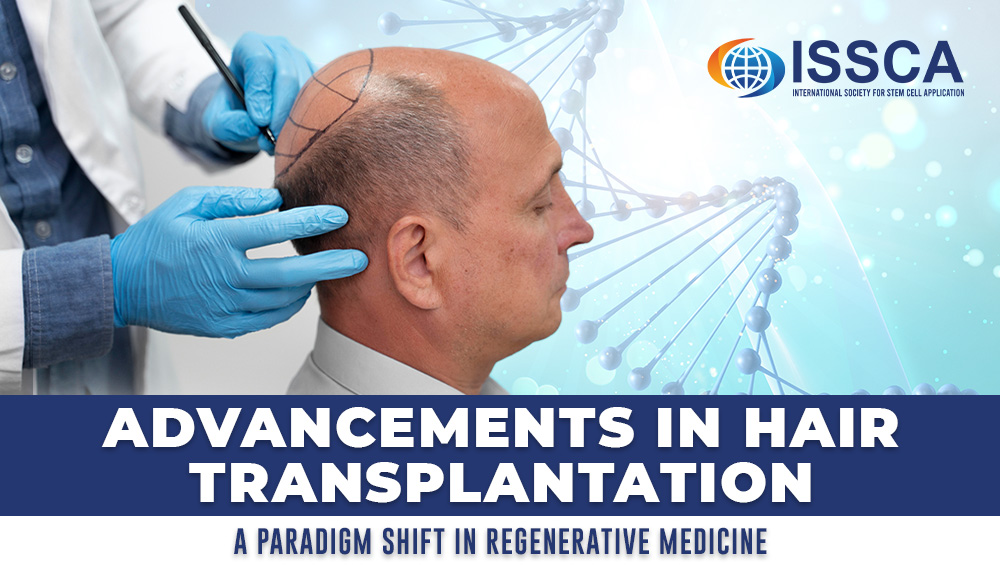
Regenerative Medicine: Revolutionizing Hair Restoration
Regenerative medicine is reshaping hair restoration with innovative approaches:
Stem Cell Therapy: Stem cells can differentiate into hair follicles, potentially stimulating hair regeneration and natural growth when introduced into the scalp.
Platelet-Rich Plasma (PRP): Using the patient’s blood enriched with growth factors, PRP therapy revitalizes hair follicles, promoting improved hair growth and quality.
Exosomes: These cellular vesicles aid in hair growth by reducing inflammation and supporting tissue regeneration, creating an optimal environment for follicle health.
Why This Transformation Matters
The shift to regenerative medicine in hair restoration goes beyond aesthetics:
Scar Minimization: Regenerative techniques minimize scarring, leading to more aesthetically pleasing results.
Enhanced Outcomes: Patients often experience more natural, robust hair growth compared to traditional methods.
Personalized Care: Regenerative medicine allows for tailored treatments that address each patient’s specific needs and hair restoration goals.
The Future of Hair Restoration
Hair transplants are undergoing a revolution with regenerative medicine:
The integration of regenerative techniques promises more natural, minimally invasive, and personalized solutions for hair loss.
Embrace the Future of Hair Restoration
Explore the frontier of regenerative medicine in hair restoration with ISSCA. Discover cutting-edge courses and insights shaping the future of healthcare on our website.
- Published in Blog


